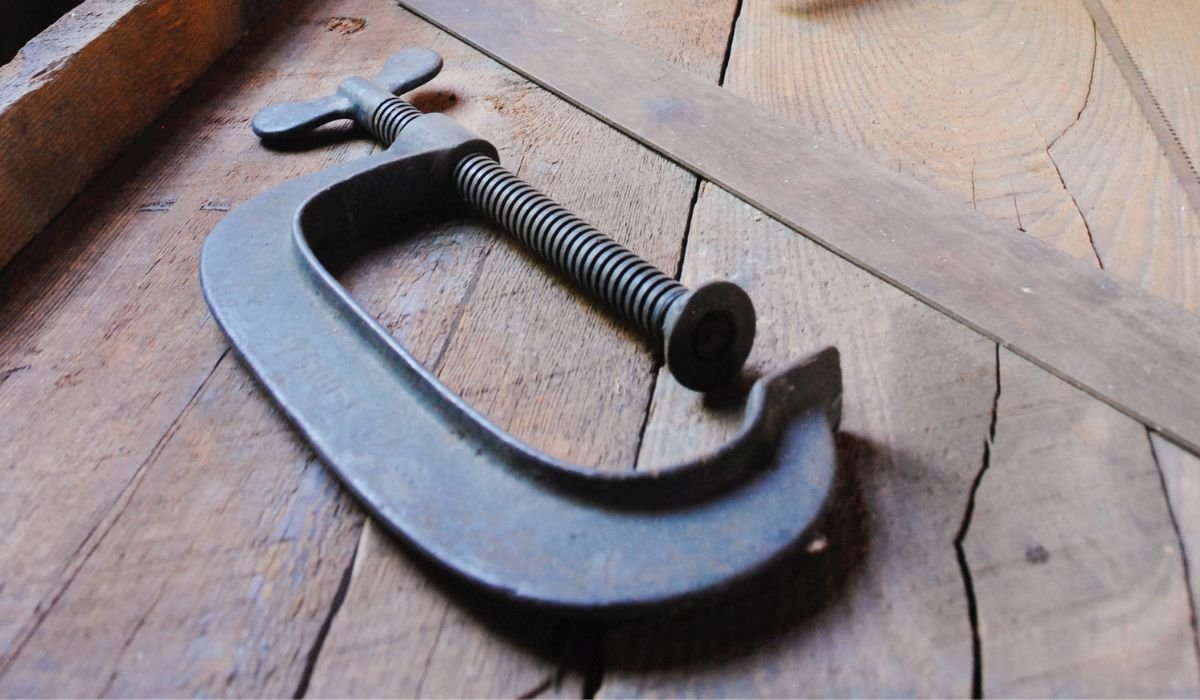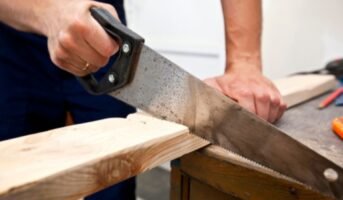Clamps are an important tool used in various construction-related fields. As the name suggests, these serve the function of clamping or clasping. They temporarily hold two pieces of objects together while they are being worked upon to prevent slippages and ensure greater strength and accuracy once the work is done.
Alongside being an indispensable tool in various construction projects, clamps also find use in the fields of metalwork and woodwork. Following is an overview of everything you need to know about clamps.
See also: Tile spacers: How and why to use them?
Types of clamps
Following is a list of the main types of clamps available in the market.
C clamp
Also known as the G-clamp, these are available in the shape of an open curve and make use of screws to hold the workpieces of wood or metal together. They get their name from the letters they resemble.
Bar clamp
These clamps have clasping jaws at the end of long bars and are majorly used in woodwork applications. They are highly useful in keeping the wooden pieces in place while gluing.
Quick release clamp
Unlike C clamps that use screws for clamping purposes, these clamps employ a lever mechanism for quicker clamping and unclamping. These are especially useful in repetitive woodwork tasks.
Spring clamp
These clamps are smaller in size and have springs in the jaws. They are not ideal for heavy-duty applications and are generally used for artistic purposes like photography and DIY.
Toggle clamp
Toggle clamps use a handle that provides fast and strong locking and unlocking. These are ideal for purposes that require quick and repetitive clamping such as metal fixtures.
Pneumatic clamp
Such clamps make use for compressed air to provide a strong clasp. They are largely used in industrial settings where applications require durable clamping.
Hold down clamp
These clamps have a vertical jaw paired with a horizontunal handle used to adjust the grip of the clamp. They are ideal for usage in the woodworking industry in situations where pieces are to be clamped to flat surfaces like the worktable.
Edge clamp
As the name suggests, these clamps are useful in holding workpieces together along their edges. This provides a firmer and tighter grip during gluing.
Band clamp
Band clamps consist of an apparatus made of a nylon band with a tightening mechanism. They are ideal for clamping objects whose shapes are not uniform.
Miter clamp
Unlike band clamps that are used for irregularly shaped pieces, if you want to clamp the pieces at a specific angle, a miter clamp is the thing for you. They are widely used in the woodworking industry and during picture framing.
Corner clamp
Corner clamps allow you to clamp together pieces of wood or metal at precise right angles. They are generally preferred for their accuracy and durability.
Welding clamp
As the name suggests, these clamps are used to hold together pieces of metal to ease the process of welding. Alongside the classic plier clamps, they are also available in a magnetic alternative.
Usage and importance in construction
Now that you know the various types of clamps available in the market and their applications, let’s have a look at their significance in the field of construction.
Temporary fixing and holding of pieces
Clamps serve the purpose of holding the materials in place so that they do not move during the process of construction. This becomes important during processing like welding and gluing wherein the materials need to be held securely in place until the process is complete and the pieces are set firmly.
Alignment and precision
Clamps are used to properly align materials concerning each other so that they serve the structural, functional and aesthetic requirements they are meant to serve. They ensure the precision of the alignment of the materials.
Safety and efficiency
The process of clamping ensures that the pieces being worked upon do not slip or fall out of place, thereby preventing the occurrence of accidents. This becomes even more important when the materials being dealt with are heavy and hazardous. Moreover, clamps also do away with the need to manually keep the pieces in place while working on them and improve efficiency.
Clamp prices
Following are the average prices of some of the clamps available in the market.
| Type of clamp | Price range |
| C clamp | Rs 250 – 3500 |
| Bar clamp | Rs 300 – 2000 |
| Quick release clamp | Rs 250 – 1400 |
| Spring clamp | Rs 300 – 1000 |
| Toggle clamp | Rs 300 – 3000 |
| Pneumatic clamp | Rs 2500 – 10000 |
| Hold down clamp | Rs 300 – 600 |
| Edge clamp | Rs 250 – 1300 |
| Band clamp | Rs 40 – 200 |
| Miter clamp | Rs 300 – 3500 |
| Corner clamp | Rs 200 – 900 |
| Welding clamp | Rs 200 – 1000 |
FAQs
What are clamps used for?
Clamps are used to hold two pieces of objects in place during the process of fixing them together.
What are the available types of clamps?
There are several types of clamps available in the market, namely C clamp, bar clamp, quick release clamp, spring clamp, toggle clamp, pneumatic clamp, hold down clamp, edge clamp, band clamp, miter clamp, corner clamp and welding clamp.
Which is the most commonly used type of clamp?
Bar clamps are the most commonly used clamp.
Why is clamping important in construction?
Clamping is important in construction to ensure precision in alignment and prevention of slippage and accidents.
What is a quick-release clamp?
A quick-release clamp uses a lever to ensure rapid clamping and unclamping. This is useful for repetitive tasks.
What is the average price range of C clamps?
C clamps can cost anything between Rs 250 - 3000 depending on the size and application.
How much does a bar clamp cost?
The average price range of bar clamps is Rs 300 - 2000.
| Got any questions or point of view on our article? We would love to hear from you. Write to our Editor-in-Chief Jhumur Ghosh at jhumur.ghosh1@housing.com |

Riddhi Chatterji is currently pursuing a master’s degree in English literature from University of Delhi. Her meticulous attention to detail and the desire to make a learning experience out of every opportunity has allowed her to work with different forms of textual content for digital platforms, ranging from social media to news desks. When not working or studying , you can find her with her head buried in a book, discovering new music and movies, or out and about exploring the city on the metro.











